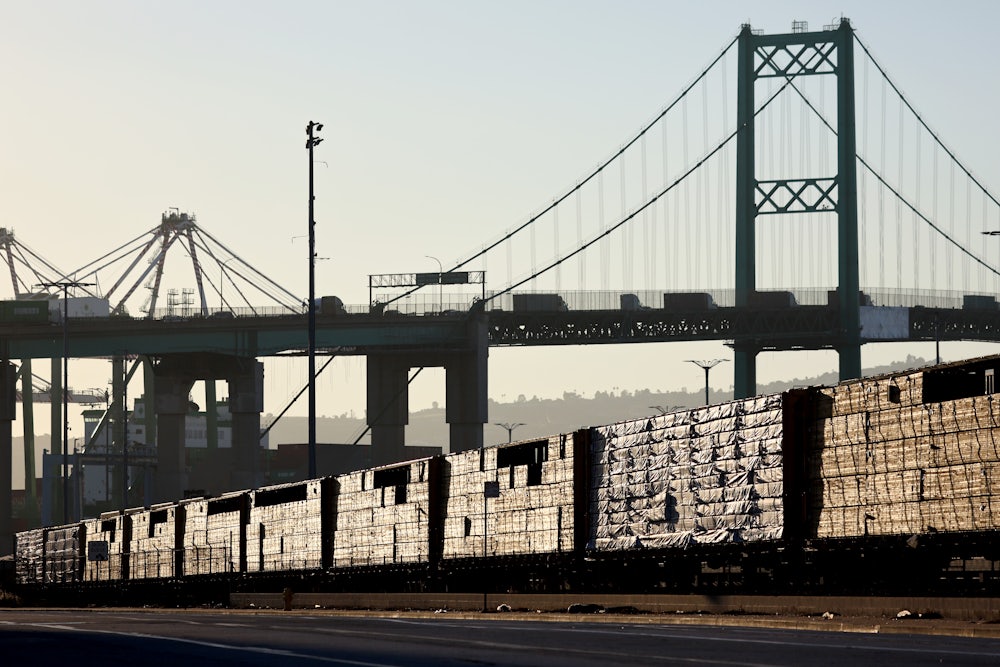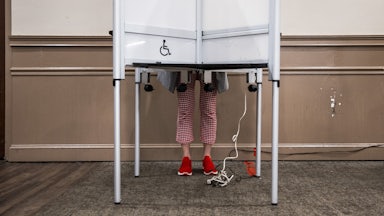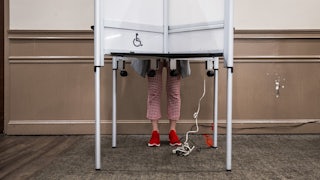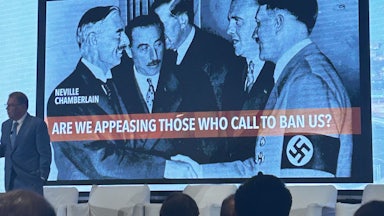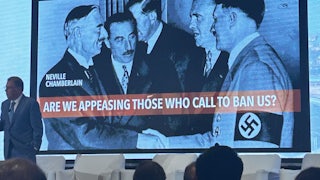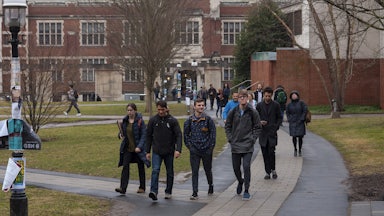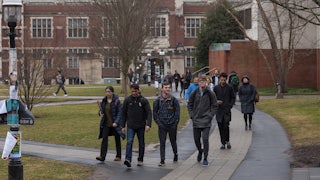Members of four unions that represent 55 percent of the U.S. freight rail labor force voted last week to reject a tentative agreement on a contract that would fail to provide them with paid sick leave, a core issue in the contract dispute with their employers. Those four unions are set to begin a strike on December 9. Eight other rail unions that instead backed the deal have pledged not to cross a picket line in solidarity, meaning that as many as 115,000 could participate in the potential work stoppage. On Monday Biden urged Congress to intervene and force workers to accept the contract in order to avert a strike, warning it would “ devastate our economy” and throw as many as 765,000 people out of work within two weeks.
Biden cited food and water as his reason for urging this extreme intervention: “Communities could lose access to chemicals necessary to ensure clean drinking water,” he wrote in an official White House statement. “Farms and ranches across the country could be unable to feed their livestock.” Outgoing House Speaker Nancy Pelosi backed Biden’s stance and plans to bring the matter to a vote Wednesday.
But in siding against rail workers, top Democrats are also siding with some of the country’s worst polluters. Among the 400 groups that called on Congress to stop the strike was the American Petroleum Institute—a trade association representing U.S. drillers—as well as the American Chemistry Council, whose members include ExxonMobil, Chevron, and Total. Refineries and petrochemical plants rely on freight rail to deliver raw materials and carry off by-products from their production processes, including products that can’t be transported via pipeline. While the White House’s message has been that unions are risking economic ruin by refusing to accept the deal it helped negotiate, another reading of this situation is that some of the country’s wealthiest people—BNSF Railway’s owner, for example, is multibillionaire Warren Buffet—are threatening to bring the country to a halt to keep some 125,000 people from attending a doctor’s visit or staying home if they get the flu. Early Wednesday in response to some Democrats’ concerns about siding with rail owners to quash the strike, Pelosi announced a plan for two separate bills: one to block the strike, and another to give workers seven days of sick leave.
Over the last several years, Class I rail carriers (those with revenue greater than $250 million) have begun to operate on razor-thin margins, ramping up efficiency to deliver as many profits as possible to shareholders who have repeatedly voted down climate-related resolutions. That means cutting back on many of the things that allow employees to live something like a normal life, like taking weekends off and getting time off when they’re sick. As Jeff Schuhrke wrote for In These Times, that quest for efficiency has resulted in major freight rail companies axing nearly a third of their workforce over the last six years. Remaining workers have been left to pick up the slack, while shareholders and CEOs have reaped the rewards: BNSF reported record earnings in 2021, while Union Pacific and CSX raked in higher profits than in prior years.
It’s worth remembering that the rail barons are also climate villains in their own right. Research from faculty and students at Brown University’s Climate and Development Lab revealed in 2019 that the country’s four largest freight railroads—BNSF Railway, Norfolk Southern, Union Pacific, and CSX—spent decades and tens of millions of dollars funding climate denial. Coal accounts for one of every three tons hauled by America’s rail freight and 14 percent of revenue generated by the largest class of railroads in 2018. That same year, freight rail facilitated a whopping 16.5 percent of total U.S. carbon pollution, The Atlantic’s Robinson Meyer noted in his report on the Brown team’s research into rail industry funding for climate denial. All have been members of the American Coalition for Clean Coal Electricity, a pro-coal group that has fought climate action and is now known as America’s Power.
A recent report from CSX states that the company “held membership in America’s Power through 2021,” when it gave the group $150,000, down from the $200,000 it gave it in 2020. CSX chose not to renew its membership for 2022, having found America’s Power’s climate aims were “not aligned” with its climate priorities. America’s Power no longer lists its member organizations on its website, though an archived webpage from earlier this year showing the group’s corporate members does not include any freight rail firms. All four of the largest freight rail companies were members as of late 2020, BNSF Railway and Union Pacific having left before 2021, followed by Norfolk Southern and CSX. Union Pacific gave America’s Power $150,000 between 2017 and 2020.
Buffet, BNSF’s owner, has recently doubled down on his investments in fossil fuels. His firm Berkshire Hathaway became Chevron’s fourth-largest equity shareholder in April, as well as the largest shareholder in Occidental Petroleum. Earlier this year, Berkshire Hathaway was ranked alongside Saudi Aramco as one of the worst-performing companies on climate by the Climate Action 100+ group, composed of major investors.
Biden’s call for an intervention is consistent with some of his administration’s other major priorities: to keep fuel prices as low as possible by whatever means necessary. The possibility of a strike has put on full display just how central fossil fuels still are to keeping the economy going, baked as they are into everything from agriculture to pharmaceutical manufacturing. The irony is that it’s difficult to imagine transforming those fossil fuel–dependent systems without the support of organized labor, to do the actual work of decarbonization and lend its political support to help overcome overwhelming opposition from corporate polluters.
There’s a strange parallel between how the White House has chosen to frame the threat of a rail strike and how it talks about climate change. In both cases, the administration seems unwilling to name an enemy, blaming polluters only for not drilling more. If it’s interested in managing either of these threats, then identifying the real villains would be the first step; the second step would be to challenge them.
